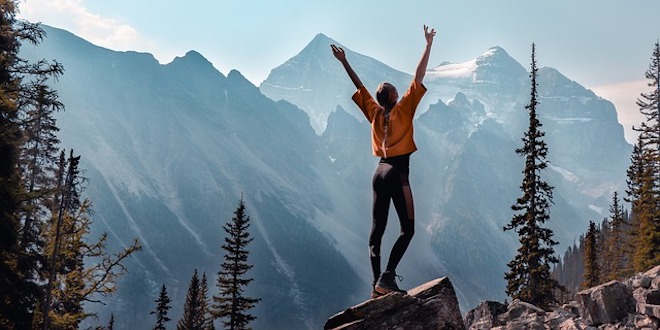Last Updated on August 4, 2023
Embarking on a multi-day hike is an exhilarating adventure that allows you to connect with nature and challenge yourself physically and mentally. Proper preparation is critical to ensure a safe and enjoyable experience. Whether you’re a seasoned hiker or a beginner, these 12 essential tips will help you make the most of your journey and create lasting memories.
1. Plan Your Route and Check Weather Conditions
Before setting off, meticulously plan your route, considering the terrain, distance, and available water sources. Familiarize yourself with the trail map and elevation profiles to estimate the time required for each leg of the hike. Additionally, check the weather forecast to pack appropriate clothing and gear for varying conditions.
2. Choose the Right Footwear
Invest in high-quality hiking boots that provide ample support and comfort for your feet. Break them in before your multi-day hike to avoid painful blisters and ensure a smoother trek. Wear moisture-wicking socks to keep your feet dry and prevent chafing.
3. Pack Light and Smart
Minimize your load by carrying only the essentials. A tactical backpack can be a game-changer in this regard. Its multiple compartments allow you to organize your gear and access items quickly and efficiently. Remember, a lighter pack will make your journey less tiring and more enjoyable.
4. Hydration is Key
Staying hydrated during a multi-day hike is crucial. Carry a reliable water purification system and drink plenty of fluids regularly. Plan your water resupply points, and always have a backup option to avoid running out of water in remote areas.
5. Master the Art of Camp Setup
Practice pitching your tent before the hike, so you can set it up quickly and efficiently when you reach the campsite. Look for flat ground and avoid low-lying areas prone to flooding. If your hike takes you through bear country, hang a bear bag from your camp to keep food safe from wildlife.
6. Bring High-Energy Snacks and Meals
Pack lightweight, high-energy snacks such as nuts, trail mix, energy bars, and dried fruits to keep your energy levels up throughout the hike. Plan nutritious meals that require minimal cooking for longer trips, and consider using a portable stove for a warm meal at the end of the day.
7. Be Prepared for Changing Weather
Weather conditions can shift rapidly during a multi-day hike, so pack clothing layers that can be easily added or removed. Include a waterproof jacket and pants to stay dry during unexpected rain showers. Remember a warm hat and gloves for chilly nights if temperatures may drop or you are hiking at higher elevations.
8. Practice Leave-No-Trace Principles
Following the Leave No Trace elements while on a multi-day hike is a responsibility and a commitment to preserving the natural beauty of the wilderness. Hikers must adhere to these principles to minimize environmental impact and ensure that future generations can enjoy the pristine landscapes we explore.
By disposing of waste properly, respecting wildlife and their habitats, staying on designated trails, and leaving natural and cultural artifacts untouched, you help preserve the ecosystem’s delicate balance.
9. Take Care of Your Feet
Regularly change into dry, moisture-wicking socks to prevent blisters and keep your feet comfortable. During rest stops, remove your boots and let your feet breathe to reduce swelling and discomfort. Treat any hot spots or blisters immediately to avoid exacerbating the issue.
Additionally, practice good foot hygiene by keeping your feet clean and dry, especially after river crossings. By paying attention to your feet and taking proactive measures, you can ensure they remain in top condition, allowing you to focus on the breathtaking scenery and the joy of the multi-day hike without unnecessary pain and discomfort.
10. Know Basic First Aid
Knowing first aid is essential on a multi-day hike because when venturing into remote and rugged terrains, access to immediate medical assistance may be limited or non-existent. In such situations, hikers must rely on their skills and resources to effectively address injuries and medical emergencies. Understanding basic first aid allows hikers to promptly assess and respond to common issues like cuts, burns, sprains and insect bites, preventing them from escalating into more severe problems.
Moreover, accidents can happen, and being prepared with first aid knowledge can make a significant difference in providing critical care before professional help arrives. Carrying a well-stocked first aid kit and knowing how to use its contents ensures that hikers can address injuries and discomforts promptly, promoting a safer and more confident multi-day hike experience for themselves and their fellow adventurers.
11. Stay Oriented with a Map and Compass
While GPS devices and smartphones are helpful, they can fail. Always carry a physical map and compass and know how to use them to navigate through unfamiliar terrain. Furthermore, you may find that you have no service in more remote areas.
12. Share Your Itinerary
Before starting your hike, inform a trusted friend or family member about your itinerary, including your planned route, campsites, and estimated return date. Check in with them whenever possible to maintain communication.
Conclusion
Embarking on a multi-day hike is a rewarding and transformative experience but requires careful preparation and a mindful approach. By following these 12 essential tips, you’ll ensure a safe and memorable journey through the wilderness, allowing you to embrace the beauty of nature while making unforgettable memories along the way. So, pack your tactical backpack, lace up your hiking boots, and prepare for an adventure of a lifetime!
 Travel for Food Hub The Food Blog for Travel Lovers
Travel for Food Hub The Food Blog for Travel Lovers















